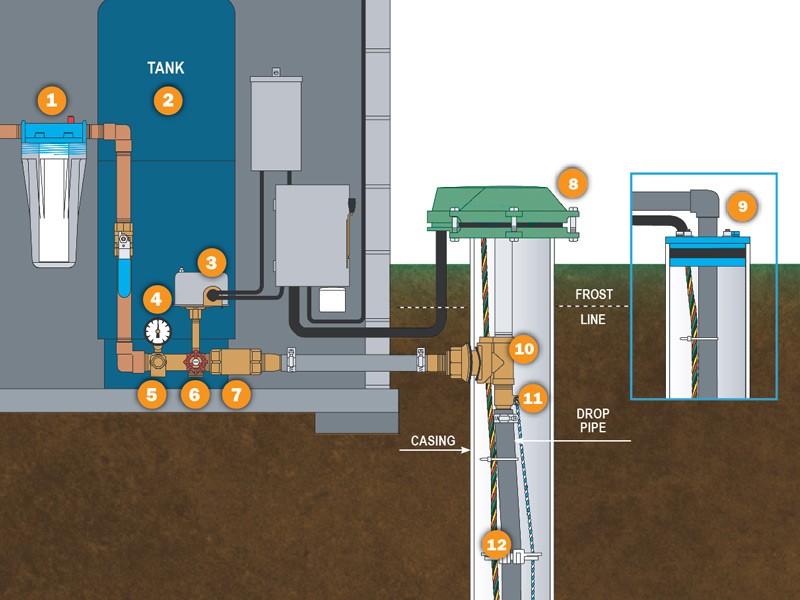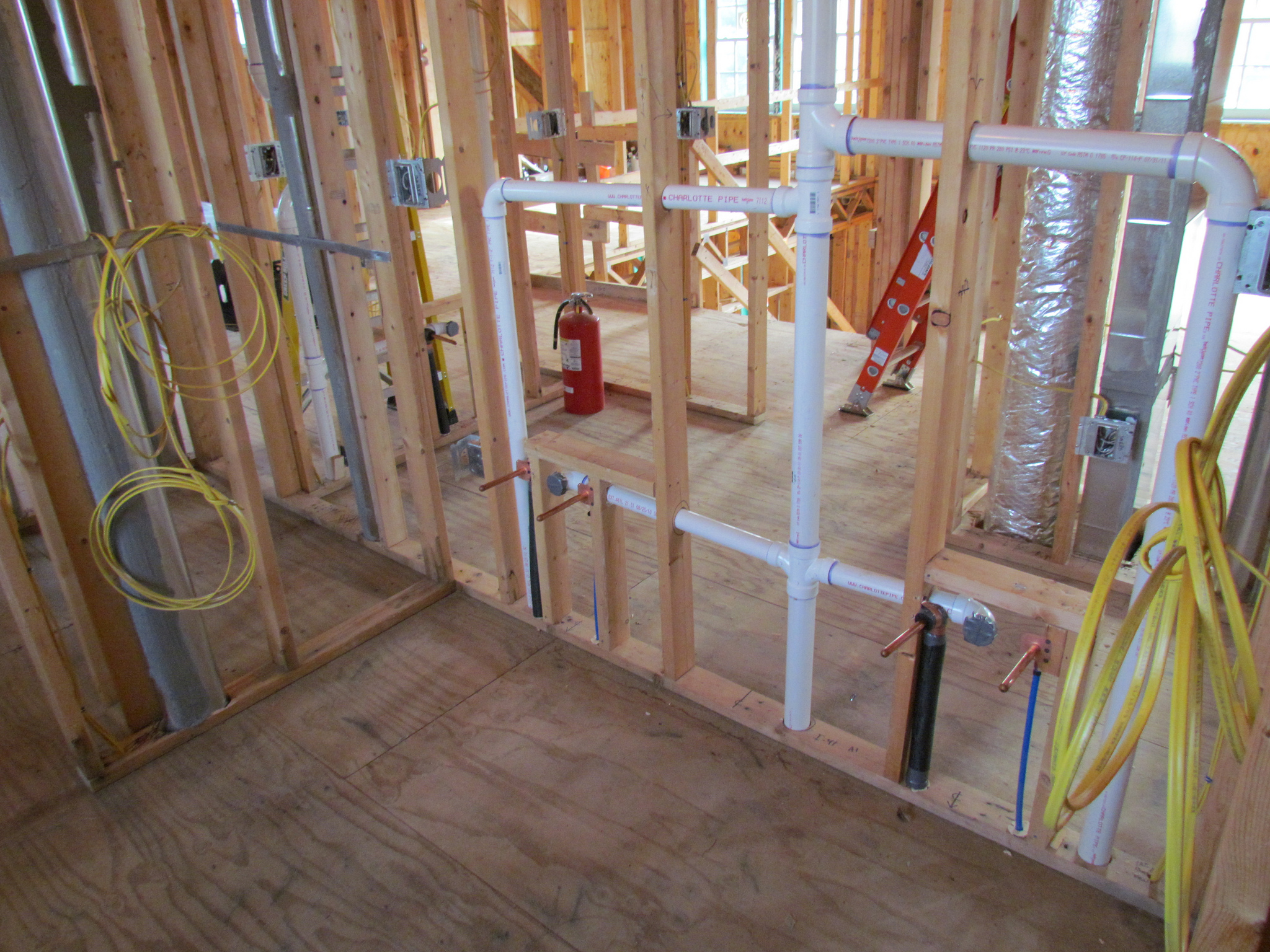Examining Your House's Plumbing System Anatomy
Examining Your House's Plumbing System Anatomy
Blog Article
This great article on the next paragraphs pertaining to Understanding Your Home's Plumbing Anatomy is relatively enlightening. Read on and make your own personal results.

Recognizing exactly how your home's plumbing system functions is necessary for each homeowner. From delivering clean water for alcohol consumption, cooking, and showering to safely removing wastewater, a properly maintained pipes system is essential for your family's wellness and comfort. In this thorough guide, we'll discover the complex network that makes up your home's pipes and offer pointers on maintenance, upgrades, and handling usual problems.
Introduction
Your home's pipes system is more than just a network of pipelines; it's a complex system that guarantees you have access to tidy water and efficient wastewater elimination. Understanding its parts and exactly how they collaborate can assist you prevent pricey repair work and guarantee everything runs smoothly.
Standard Elements of a Plumbing System
Pipelines and Tubes
At the heart of your plumbing system are the pipelines and tubes that bring water throughout your home. These can be made of various products such as copper, PVC, or PEX, each with its benefits in regards to longevity and cost-effectiveness.
Fixtures: Sinks, Toilets, Showers, and so on.
Components like sinks, toilets, showers, and bath tubs are where water is utilized in your home. Understanding how these fixtures connect to the pipes system assists in identifying issues and intending upgrades.
Valves and Shut-off Factors
Shutoffs manage the circulation of water in your pipes system. Shut-off shutoffs are critical throughout emergency situations or when you need to make fixings, permitting you to isolate parts of the system without disrupting water flow to the whole house.
Water Supply System
Key Water Line
The main water line links your home to the community water or a private well. It's where water enters your home and is dispersed to different components.
Water Meter and Pressure Regulatory Authority
The water meter actions your water use, while a pressure regulator makes sure that water flows at a risk-free pressure throughout your home's plumbing system, avoiding damages to pipelines and components.
Cold Water vs. Warm water Lines
Understanding the distinction between cold water lines, which provide water directly from the primary, and warm water lines, which lug warmed water from the hot water heater, aids in fixing and preparing for upgrades.
Water drainage System
Drain Pipes Water Lines and Traps
Drain pipelines bring wastewater far from sinks, showers, and bathrooms to the sewage system or septic system. Traps avoid drain gases from entering your home and likewise trap particles that might create obstructions.
Air flow Pipes
Ventilation pipelines permit air right into the water drainage system, preventing suction that could slow down water drainage and trigger traps to vacant. Appropriate ventilation is necessary for keeping the integrity of your pipes system.
Relevance of Correct Drain
Making sure appropriate drainage avoids backups and water damage. Regularly cleaning drains pipes and keeping catches can stop expensive repair work and prolong the life of your pipes system.
Water Furnace
Kinds Of Water Heaters
Hot water heater can be tankless or standard tank-style. Tankless heaters warmth water as needed, while tanks save heated water for immediate use.
Updating Your Plumbing System
Factors for Updating
Upgrading to water-efficient components or replacing old pipes can improve water top quality, decrease water bills, and boost the value of your home.
Modern Pipes Technologies and Their Benefits
Discover innovations like clever leakage detectors, water-saving toilets, and energy-efficient hot water heater that can conserve money and reduce environmental influence.
Cost Considerations and ROI
Determine the ahead of time costs versus lasting savings when taking into consideration plumbing upgrades. Several upgrades pay for themselves with reduced energy costs and less repair work.
Exactly How Water Heaters Connect to the Plumbing System
Recognizing how water heaters connect to both the cold water supply and hot water distribution lines assists in diagnosing concerns like insufficient warm water or leakages.
Upkeep Tips for Water Heaters
Regularly purging your hot water heater to eliminate debris, examining the temperature level settings, and examining for leakages can extend its lifespan and enhance power efficiency.
Common Pipes Concerns
Leaks and Their Causes
Leakages can happen because of maturing pipes, loose fittings, or high water pressure. Attending to leakages promptly stops water damage and mold growth.
Blockages and Clogs
Clogs in drains pipes and toilets are typically brought on by flushing non-flushable items or an accumulation of grease and hair. Using drain screens and bearing in mind what drops your drains can avoid clogs.
Indications of Pipes Issues to Look For
Low water stress, slow-moving drains, foul odors, or uncommonly high water expenses are indicators of potential plumbing problems that must be resolved quickly.
Pipes Upkeep Tips
Normal Examinations and Checks
Schedule annual pipes examinations to capture issues early. Look for signs of leaks, rust, or mineral build-up in taps and showerheads.
DIY Maintenance Tasks
Basic jobs like cleansing tap aerators, looking for commode leaks utilizing color tablets, or shielding revealed pipelines in cool climates can stop major plumbing issues.
When to Call a Specialist Plumbing Technician
Know when a plumbing issue requires professional knowledge. Attempting complex repair services without appropriate knowledge can bring about even more damages and greater repair work costs.
Tips for Lowering Water Use
Easy routines like taking care of leaks without delay, taking shorter showers, and running full loads of washing and recipes can conserve water and reduced your energy expenses.
Eco-Friendly Plumbing Options
Consider sustainable plumbing materials like bamboo for floor covering, which is durable and environment-friendly, or recycled glass for countertops.
Emergency Preparedness
Actions to Take Throughout a Plumbing Emergency
Know where your shut-off valves are located and just how to turn off the water supply in case of a ruptured pipe or major leakage.
Value of Having Emergency Situation Get In Touches With Handy
Maintain call info for neighborhood plumbing technicians or emergency solutions readily offered for quick action throughout a plumbing crisis.
Ecological Impact and Conservation
Water-Saving Fixtures and Devices
Setting up low-flow faucets, showerheads, and toilets can significantly minimize water usage without sacrificing efficiency.
Do It Yourself Emergency Fixes (When Applicable).
Momentary repairs like making use of duct tape to spot a dripping pipeline or putting a bucket under a trickling faucet can decrease damages until an expert plumbing arrives.
Final thought.
Comprehending the makeup of your home's plumbing system encourages you to preserve it successfully, saving money and time on repair work. By adhering to regular upkeep routines and remaining notified about contemporary plumbing modern technologies, you can ensure your pipes system operates successfully for many years to come.
The Anatomy of Your Home s Plumbing System
Understanding the anatomy of your home s plumbing system is essential for any homeowner. It not only helps in identifying potential issues but also facilitates effective communication with professionals when repairs or upgrades are needed. Your home s plumbing system is more than just pipes and faucets; it s a complex network that ensures the efficient and hygienic flow of water in and out of your house. In this blog, we ll dissect the crucial components of your home s plumbing system. For those in Antelope Valley, Brock Plumbing is your trusted partner for all your plumbing needs, ensuring your system functions smoothly and efficiently.
Water Supply System
Main Water Line: This is where your home s plumbing system begins. The main water line connects your home to the public water supply or a private well. Pipes and Shut-off Valves: Pipes distribute water throughout your home. Shut-off valves are crucial for controlling the flow of water and making repairs without shutting off the entire system. Drainage System
Drain Pipes: These pipes carry waste and water away from sinks, toilets, and showers. Vents: Vents allow sewer gases to escape and help maintain proper pressure in the drainage pipes, ensuring efficient flow of wastewater. Traps: Every fixture has a trap, a U-shaped pipe that holds water and prevents sewer gases from entering your home. The most common is the P-trap under sinks. Fixtures and Appliances
Fixtures and appliances are the most interacted with parts of your plumbing system. They include sinks, toilets, showers, dishwashers, and washing machines. Each fixture and appliance has its own supply and drainage connection, ensuring they receive clean water and can dispose of wastewater effectively.
Water Heating System
Your water heater is a crucial component, providing hot water to various fixtures and appliances in your home. It can be tank-based or tankless, with each type having its own set of advantages and maintenance requirements. Regular maintenance is essential to ensure efficient operation and extend the lifespan of the unit.
Sump Pump
In areas prone to flooding or with high water tables, a sump pump is an essential part of the plumbing system. It s installed in the lowest part of your basement or crawlspace and pumps out water that accumulates, preventing flooding and protecting your home from water damage.
Septic System
Homes that are not connected to a municipal sewer system have a septic system and an underground wastewater treatment structure. Understanding how to maintain your septic system is crucial to prevent backups, odors, and early system failure.
Conclusion
Your home s plumbing system is a complex and essential network, ensuring the efficient and hygienic flow of water in and out of your property. Understanding its key components helps in maintaining it properly and identifying issues before they escalate into major problems. For residents in Antelope Valley, Brock Plumbing is dedicated to providing top-notch services, ensuring that every part of your plumbing system is in perfect working order. Trust our team of professionals to handle all your plumbing needs, ensuring your home remains comfortable, safe, and well-maintained.
https://brockplumbinganddrains.com/blog/the-anatomy-of-your-homes-plumbing-system/

We are very inquisitive about The Inner Workings of Your Home's Plumbing and I'm hoping you enjoyed the entire page. Sharing is caring. Helping others is fun. Kudos for your time. Come back soon.
Schedule Service Now Report this page